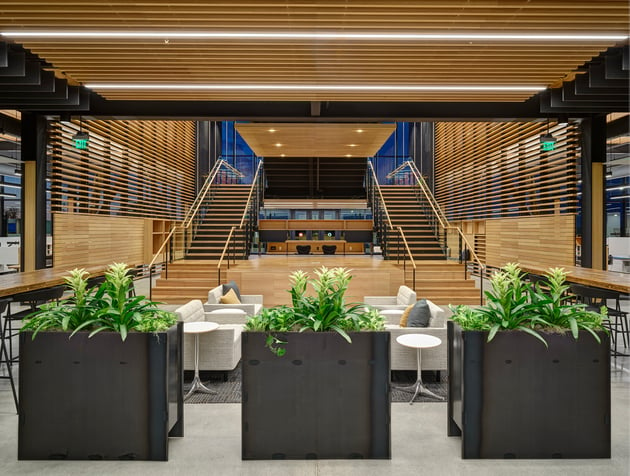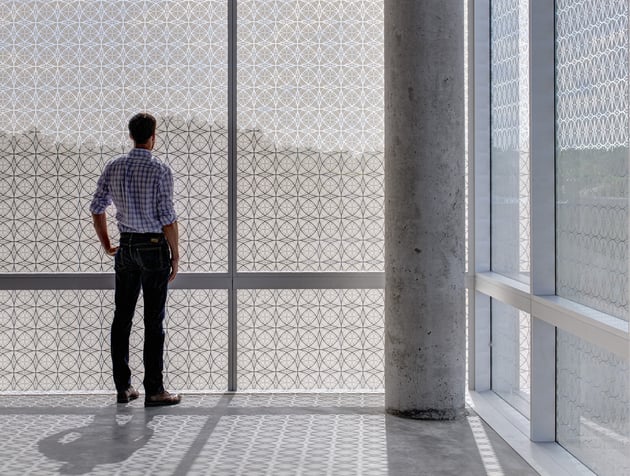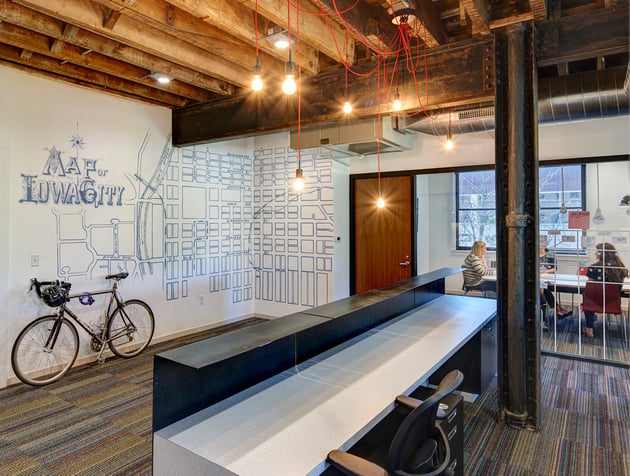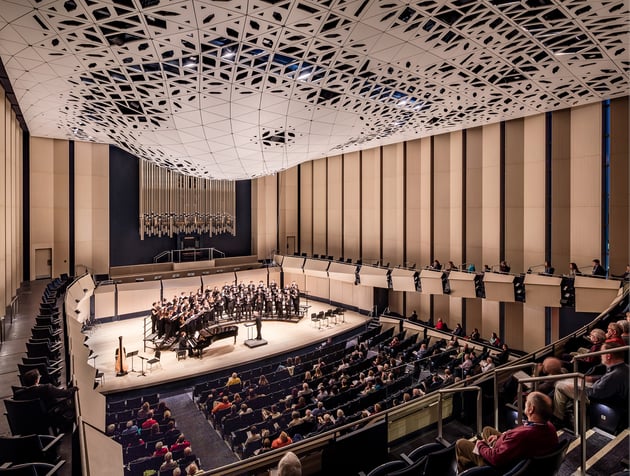The Six Principles of Biophilic Design

Coined by psychologist Eric Fromm in 1964, biophilia refers to our innate connection with nature. It stems from the Greek words for “life” and “love” and explains why people around the globe enjoy experiences like walking through a forest or listening to ocean waves. Architects and interior designers have put biophilia into practice by creating connections to nature within the built environment.
This practice is known as “biophilic design,” and it offers many psychological benefits, including reduced stress and improved cognitive function. Due to the benefits, biophilic design has become a core component of building verification systems like the Living Building Challenge (LBC).
If you undertake an LBC project, you and your team will participate in a Biophilic Exploration, a workshop that helps you better understand biophilia and its connection to your project.
In the Biophilic Exploration, you will learn about Stephen Kellert’s six biophilic design principles. This article will discuss these six principles in more detail and provide examples, helping you explore ways your project can connect to nature.
The Six Principles of Biophilic Design
Stephen Kellert was a professor of social ecology at the Yale School of Forestry and Design. Throughout his career, he helped develop the field of biophilic design and became one of its biggest advocates. His six principles offer a practical framework for brainstorming design decisions, helping you consider how to incorporate nature into your project.
1. Environmental Features
Biophilic spaces often include well-recognized features of the natural world. Features like vegetation, water, sunlight, and natural materials create a more pleasing visual and tactile experience.
This principle can be applied on different scales. Some projects may stick to features like potted plants and materials like wood and stone, while others may incorporate larger features like courtyards, living wall planters, ponds, or fountains.

Indoor foliage at Kreg Tool's headquarters.
2. Natural Shapes and Forms
Using naturally occurring shapes, patterns, and forms is another element of biophilic design. These elements can include botanical motifs, spirals, arches, and curves.
Mimicking or recreating natural forms can create a symbolic and subconscious connection to nature. For example, an arched doorway or a vaulted ceiling may remind one of a cave, creating a sense of shelter and refuge.
3. Natural Patterns and Processes
This principle refers to the structures and laws of the natural world. Biophilic spaces may include patterns found in nature, such as fractals. They may also reflect natural processes, like growth or aging.
Whether we recognize it or not, these processes stimulate our senses. Evolving materials like weathering steel reflect the passage of time, creating a more stimulating environment. Contrasting evolving materials with static materials can create a rich and varied sensory experience.

Weathering steel at St. Luke the Evangelist.
4. Light and Space
Daylighting is essential to biophilic design. Interior spaces with ample daylight can boost mood, improve productivity, and help regulate circadian rhythms.
Beyond standard lighting strategies, the principle recommends varied lighting to mimic how we experience light outdoors. For example, shadows and diffused light can mimic light filtering through a forest.
The principle also focuses on how occupants experience space. Varied interior volumes can mimic the experience of nature, reminding occupants of open skies or tree canopies.

Diffused light at One Place.
5. Place-Based Relationships
This principle encourages designers to avoid “placeless-ness” and root a building or interior space within its context. On a basic level, it involves using local materials, native plantings, and indigenous building techniques.
However, this principle is also about capturing the “spirit” of a place. In the LBC’s Biophilic Exploration, you learn about your local ecology, history, and culture. This information can inspire design ideas that root your project in its community context.
For example, you may incorporate local art or references to historic events or figures. Such design decisions create an emotional connection to the project and give people a deeper appreciation of their community and the environment.
Having a conversation about biophilia early in the design process allows you to better integrate these features into the design and create a more impactful project.

A map of Iowa City at the Downtown District's office.
6. Evolved Human-Nature Relationships
The last principle refers to our evolutionary relationship with nature and how we can recreate this feeling in the built environment. Designers can work to create a sense of:
- Protection and refuge
- Awe and excitement
- Order and complexity
- Exploration and discovery
These are all sensations we experience as we immerse ourselves in the natural environment. By identifying and naming these feelings, we are better able to integrate them into a building’s design. Readily experiencing the sensations of nature makes us more likely to appreciate and protect it.
 Order and complexity at Voxman School of Music.
Order and complexity at Voxman School of Music.
Learn More About the Biophilic Design
Biophilic design is becoming increasingly popular—for good reason! These strategies can help improve occupant health and well-being and stimulate our senses.
Stephen Kellert’s six principles provide a great starting point for brainstorming design decisions. By thinking through these principles, you can visualize how your project can better reflect and connect to the natural world. While houseplants are a great start, there are many more to experience the benefits of nature.
If you start an LBC project, you will dive deeper into each of these principles in your Biophilic Exploration. Learn more by reading about how to prepare for the workshop.